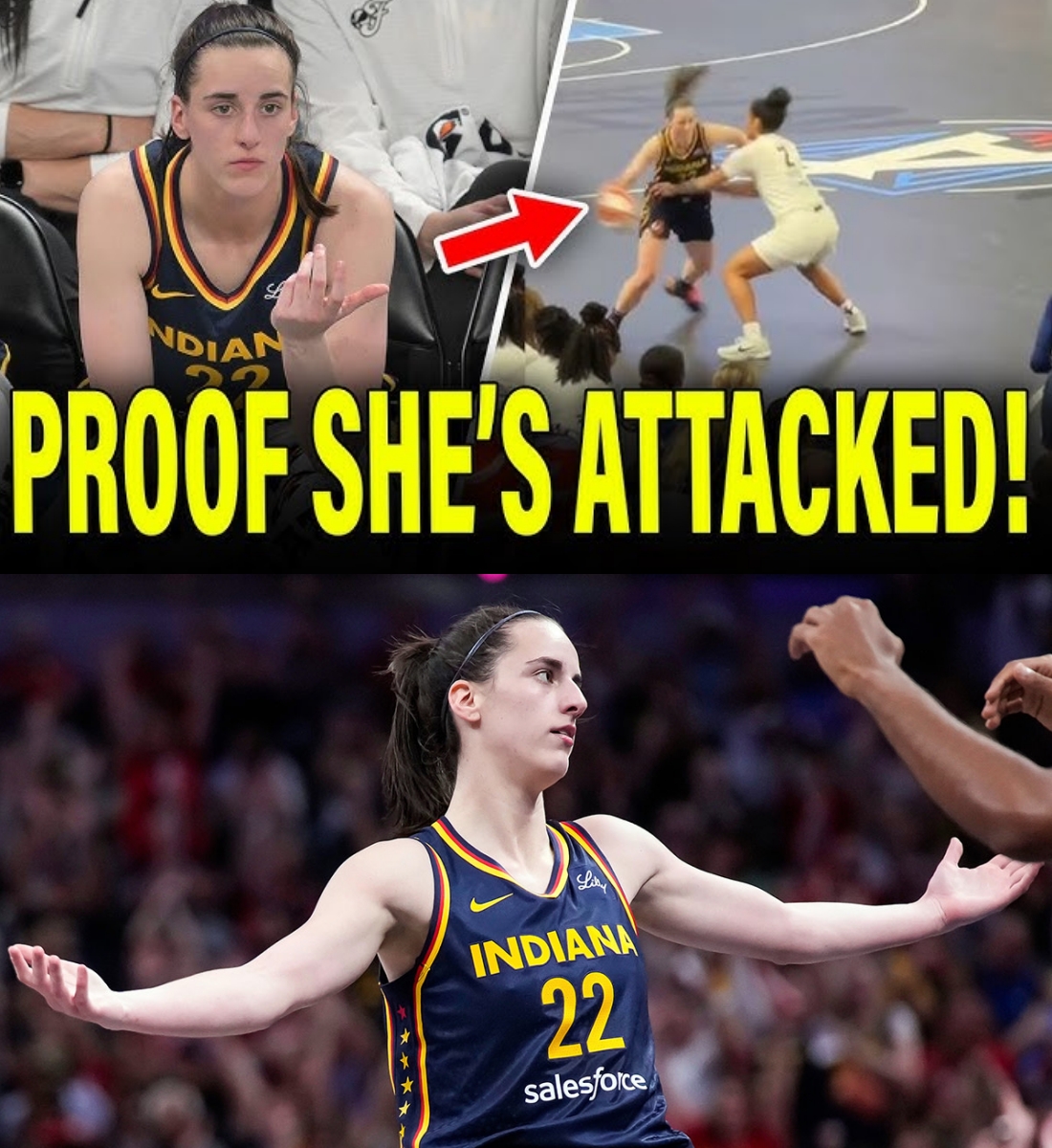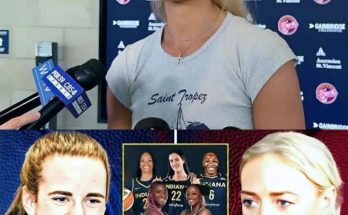
New Viral Footage Proves Caitlin Clark Attacked by Atlanta Dream: Is There an Agenda Against the Indiana Fever?
A new viral video has exploded across social media, reigniting the debate over how Caitlin Clark, the Indiana Fever’s breakout star, is being treated in the WNBA. The footage, captured during a heated matchup against the Atlanta Dream, shows Clark being subjected to aggressive, arguably excessive, physical play—raising fresh questions about officiating standards, league priorities, and the culture surrounding women’s basketball’s fastest-rising star.
The incident at the center of the controversy involves Atlanta Dream’s Tahina Pow Pow, who is seen grabbing Clark’s arm and jersey as Clark attempts to create space on the wing. The play, which quickly went viral, sparked outrage among fans and analysts who believe Clark was the target of a deliberate and unchecked attack. As Clark tries to break free and hit a three-pointer, Pow Pow’s double-handed hold and hip check stand out, drawing comparisons to wrestling more than basketball. Yet, despite the clear physicality, officials on the court let play continue, with no foul called—an omission that many are calling one of the worst missed calls in recent WNBA memory.
This moment is not isolated. Instead, it’s the latest in a series of incidents where Clark appears to be singled out for unusually rough treatment, while referees consistently swallow their whistles. Critics say this is more than just tough defense—it’s an emerging pattern that suggests a hidden agenda against the Indiana Fever and their star rookie. The lack of protection for Clark, who regularly draws sold-out crowds and record TV audiences, has become a flashpoint for debate about fairness, consistency, and the league’s responsibility to safeguard its most marketable talent.
The new footage, slowed down and analyzed frame by frame across sports media, leaves little doubt about the physicality Clark endures. Pow Pow’s two-handed jersey grab, the hip lock, and the full-body check are all visible. Clark, known for her composure and resilience, fights through the contact and drains a step-back three-pointer—but the conversation quickly shifts from her skill to the officiating. Fans and commentators alike are left questioning why such blatant fouls are ignored, especially when committed against the league’s brightest new star.
Some argue that the WNBA is sending a dangerous message. By allowing Clark to be targeted without consequence, the league risks normalizing this level of aggression. Every time a referee ignores a clear foul, it signals to other teams that it’s open season on Clark. The narrative has shifted from Clark needing to “toughen up” as a rookie, to accusations that she’s now “too physical” when she pushes back. The double standard is obvious: when other players use their bodies to create space, they’re praised for their grit; when Clark does it, she’s criticized and even blamed for the contact.
This double standard is not lost on fans or analysts. Social media has erupted with debate, with some users blaming Clark for initiating contact, while others point out that her so-called “push-off” was a natural reaction to being grabbed and held. The viral clip has become a Rorschach test for basketball fans, revealing deep divisions over how the game should be played—and officiated.
The numbers reinforce Clark’s impact and the stakes of this ongoing controversy. In her rookie season, Clark averaged 16.5 points, 4 assists, and 5.5 rebounds per game, shooting 37% from the field and nearly 32% from three. Her preseason stats are even more impressive: 14.5 points, 6 assists, and 6 rebounds per game, while shooting over 50% from the field and from beyond the arc. She’s not just surviving the physical play—she’s thriving, evolving her game, and continuing to draw fans in record numbers. Yet, for all her contributions, she remains the target of relentless physicality and inconsistent officiating.
The situation has broader implications for the Indiana Fever as well. The team, still young and developing, relies on Clark’s leadership and playmaking to set the tone. But when she’s subjected to near-constant contact without calls, it disrupts the team’s rhythm and limits their potential. The lack of fair officiating doesn’t just affect Clark’s stat line—it impacts the entire Fever offense and, by extension, the league’s ability to showcase its most exciting talent.
There are also cultural ramifications. Young fans watching at home see their idol being hacked, blamed, and criticized for things other players routinely get away with. The message is clear: in the WNBA, standing out can make you a target, and excellence may come at the cost of fair treatment. This is not the legacy the league should want to build, especially as it seeks to grow its audience and inspire the next generation of players.
The league’s response—or lack thereof—has only fueled the controversy. While Clark continues to play through contact, rarely showing frustration or complaining, the silence from officials is deafening. Many believe the WNBA must do more to protect its stars, not just for Clark’s sake, but for the integrity of the game itself. If the perception grows that the league is unwilling or unable to enforce its own rules consistently, it risks alienating fans and undermining the progress women’s basketball has made.
Despite the adversity, Clark’s resilience stands out. She continues to perform at an elite level, averaging over 14 points, 6 assists, and 6 rebounds in limited preseason minutes. Her ability to shake off contact, maintain her focus, and deliver highlight-reel plays is a testament to her mental toughness. Yet, the question remains: how long can she carry this burden alone? The league’s biggest draw deserves the same protection and respect afforded to every other star.
As the WNBA season progresses, the spotlight will remain on Clark, the Indiana Fever, and the referees tasked with maintaining order on the court. The viral footage of her treatment by the Atlanta Dream is more than just a single missed call—it’s a symbol of a larger issue that the league must address. If the WNBA wants to continue its upward trajectory, it must ensure that its best players are allowed to shine, free from unfair targeting and inconsistent officiating.
The conversation is far from over. Fans, analysts, and players alike are demanding accountability and change. As Clark herself continues to let her play do the talking, the league faces a critical choice: protect its stars and uphold the integrity of the game, or risk letting controversy overshadow the progress women’s basketball has worked so hard to achieve.

